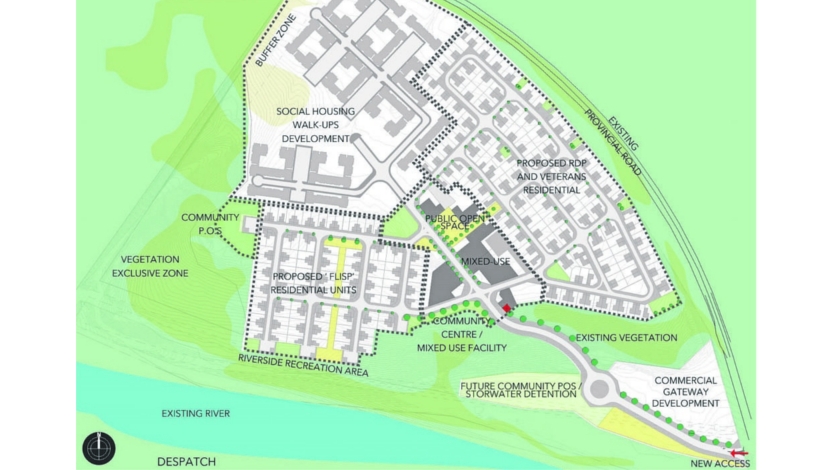
The Raubex Group has showcased its turnkey solutions capability at a 476-unit housing project for Kumba Iron Ore at its Sishen Mine at Kathu in the Northern Cape. “The success of the housing project undertaken for Anglo American at Kumba holds huge potential for Raubex in the mining services sector,” Barend Badenhorst, MD of Raubex Housing, says.
The housing project formed part of Kumba Iron Ore’s commitment to convert all mine hostels by the end of 2014 in line with the Mining Charter. It was undertaken by the Raubex Matlapeng Joint Venture.
Construction began in October 2013 and all four phases were handed over by December 2014. The project was complicated by a 6-km-long, 700-mm high-density polyethylene dewatering pipeline that bisected the site, a contract awarded in May 2013 to Raubex Infra and scheduled for completion in May 2015.
The latter contract includes a pump station and associated concrete works. Raubex Group companies Raubex Housing built the top structures, L&R Civil was responsible for the 13 km of water and sewer reticulation and Raubex KZN built the 8-km road network. Raubex Housing achieved a rate of 1.7 houses a day with six trucks delivering 60,000 bricks a day.
The project required careful coordination and management as a result of the immense scale and scope. “Essentially this meant building the top structures while simultaneously putting in the electricity, water, stormwater and sewerage reticulation, as well as building the road network. All four of these disciplines were on site at the same time.”
The ground conditions were another challenge as the predominance of calcrete posed a major problem in terms of the installation of bulk services.
A Vermeer milling machine was used to trench the calcrete to the required depth, with the minimum depth of the trenches being 1.6 m and going up to 4 m for the water and sewerage reticulation. This resulted in 80,000 m3 of waste material that L&R Civil screened and crushed on site for reuse as layer works in the road construction, and to sell into the open market.
The top structures were built on concrete rafts as opposed to foundations. About 1,500 workers were on site at the peak, with 12 excavators and ten TLBs in operation.
The workforce was scaled back to about 200 as the project entered the finishing stretch, and a single plastering team remained on site to complete the final eight houses. A key focus was investing in local skills development, with the Raubex Group establishing a contractors’ camp on site to provide training in trades such as plastering, bricklaying and carpentry.
“Community development is an integral part of the Raubex Group’s philosophy, as it strives constantly to add value wherever it operates. Our success is largely attributable to our employees, from management down to the workers on site. It is their passion and dedication that allows us to tackle projects of this scale, and to achieve such a consistently high level of quality and productivity,” Badenhorst says.
Badenhorst concludes: “To have a complete project handed over from a developer like Raubex Housing, which took full responsibility and managed it from start to finish, is bringing a totally new perspective to bear on the market. This successful developer model is Raubex Housing’s main success on this project, where it has proved particularly beneficial to Kumba Iron Ore.”
More information from Barend Badenhorst Tel :+27(0)10 140 0302 www.raubex.com





